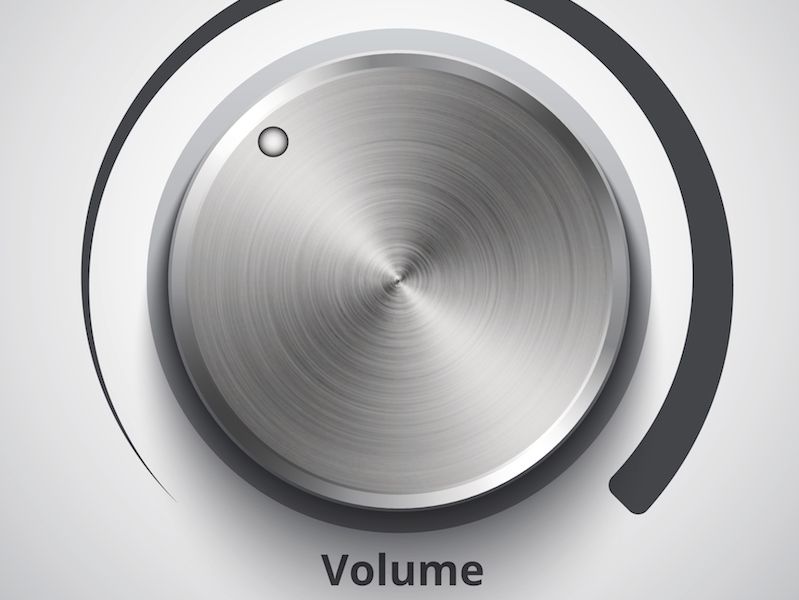
Have you ever seen the “Beware of Sharks” sign when you’re at the ocean? It’s not really a warning you dismiss. You may even rethink swimming at all with a sign like that (if the sign is written in big red letters that’s particularly true). But people don’t tend to pay attention to warnings about their hearing in the same way for some reason.
Recent studies have found that millions of people ignore warning signs regarding their hearing (there’s no doubt that this is a global concern, though these studies were exclusively conducted in the UK). Knowledge is a huge part of the problem. Being afraid of sharks is fairly instinctive. But fear of loud noise? And how do you recognize how loud is too loud?
Loud And Hazardous Sound is All Around us
Your ears are not just in danger at a live concert or on the floor of a machine shop (not to minimize the hearing risks of these situations). There are potential dangers with many common sounds. That’s because the duration of sound is as dangerous as the volume. Even lower-level noises, such as dense city traffic, can be harmful to your hearing if you are exposed for more than a couple of hours.
keep reading to find out when sound gets too loud:
- 30 dB: Normal conversation would be at this sound level. You should be just fine around this level for an indefinite length of time.
- 80 – 85 dB: This is the volume of heavy traffic, lawn equipment, or an air conditioner. This level of sound will usually become damaging after two hours of exposure.
- 90 – 95 dB: A motorcycle is a good illustration of this sound level. 50 minutes is enough to be unsafe at this level of sound.
- 100 dB: This is the level of noise you may experience from a mid-size sports event or an oncoming subway train (depending on the city, of course). 15 minutes of exposure will be enough to be dangerous at this sound level.
- 110 dB: Have you ever cranked your Spotify music up to ten? On most smartphones, that’s right around this level. 5 minutes will be enough to be dangerous at this level.
- 120 dB and over: Any sound over 120 dB (think loud rock show or exceptionally large sports events) can result in immediate damage and pain in your ears.
What Does 85 dB Sound Like?
Generally, you’re hearing is in danger when you’re dealing with any sound 85 dB or above. The issue is that it isn’t always apparent just how loud 85 dB is. It’s not tangible the way that a shark is tangible.
And hearing warnings frequently go ignored because of this when the sound environment isn’t loud enough to cause pain, this is especially true. There are a couple of possible solutions to this:
- Download an app: There isn’t an app that’s going to directly safeguard your ears. But there are a few sound level metering apps. It’s difficult to assess what 85 dB feels like so your hearing can be damaged without you even realizing it. The answer, then, is to have this app open and track the sound levels near you. Using this method will make it more instinctive to distinguish when you are moving into the “danger zone”. (and you will also discern immediately when things are getting too loud).
- Sufficient signage and training: This particularly refers to workspaces. The significant hazards of hearing loss can be reinforced by signage and training (and the benefits of hearing protection). Signage could also let you know just how noisy your workplace is. Training can help employees know when hearing protection is necessary or suggested.
When in Doubt: Protect
Apps and signage aren’t a foolproof solution. So if you’re in doubt, take the time to safeguard your hearing. Over a long enough period of time, noise damage will almost definitely create hearing issues. And these days, it’s never been easier to damage your ears (all you have to do is turn your earpods up a little too loud).
If you’re listening to headphones all day, you should not increase the volume past the mid-mark. You need noise cancellation headphones if you are always turning up the volume to cover up background sound.
So when volume becomes too loud, it’s important to accept it. Raising your own knowledge and awareness is the answer if you want to do that. Protecting your ears, wearing ear protection, or decreasing your exposure, is not that difficult. But you have to know when to do it.
Nowadays that should also be easier. That’s even more accurate now that you have some awareness.
Think you might have hearing loss? Make an appointment.

